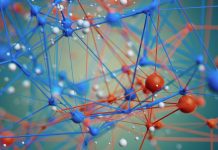The Division of Chemistry at the National Science Foundation, provides an update on their work in driving discovery and development concerning chemistry research that improves the quality of life in the United States
The Division of Chemistry (CHE) at the National Science Foundation (NSF) has long supported the discovery and development of the new chemical methods, molecularly designed materials, tools and applications that drive the economy and improve the quality of life. While chemical research has had undeniably large and positive impacts on society, many challenges remain, from better understanding and remediating environmental contaminants, to making existing industries more efficient, to capturing and storing energy from more sustainable sources.
Funding
With new funding opportunities such as the Critical Aspects of Sustainability program and a focus on promoting the Industries of the Future (for example, Advanced Manufacturing, Biotechnology, Quantum Information Science, and Artificial Intelligence, and 5G), CHE encourages fundamental chemical research leading to products that are both more sustainable and more easily manufactured. NSF CHE also seeks to develop a workforce ready to tackle these challenges.
The past century has witnessed a meteoric rise of polymer-based consumer goods, used in everything from clothing to food storage, from implantable medical devices to automotive parts. Yet when not disposed of properly, after initial use, these plastics persist in the environment for hundreds of years. Over time, the discarded plastics can break down into micro- and nanoscopic particles that invade food and water supplies. CHE supports the rethinking of plastics recyclability and the development of characterisation and environmental remediation methods to better understand and combat this problem. Altering the chemical structures of traditional plastics so that they are more readily degraded into harmless components, perhaps through photochemical processes or under microbial catalysis, may lead to less plastic refuse.
Chemically recyclable polymers
Another approach to the reduction of plastic waste is the development of entirely new polymers that are chemically recyclable, that is, they maintain their integrity during use, but that also can be catalytically broken down into individual monomers units and later re-polymerized. A corollary to this approach involves the upcycling of discarded polymers to new value-added building blocks, an emerging area that is ripe for development. To address the micro- and nanoplastics already in the environment, CHE supports research that seeks to understand micro- and nanoplastic environmental impact, fate, degradation, surface chemistry, and impacts in biology.
Today, the chemical industry, including the pharmaceutical and agrochemical sectors, relies on the synthesis of complex molecules. The structural complexity of these target molecules often necessitates multi-step synthesis punctuated by myriad separation steps. There is room for innovation in these synthetic processes to reduce waste generation or, instead, generate useful byproducts from key bond constructions. In a related vein, there is continued interest in developing new synthetic transformations that substitute earth-abundant metal catalysts or non-metal reagents for tried-and-true, precious metal-containing catalysts. CHE supports the discovery and development of new and sustainable synthetic methods to construct molecular targets selectively and efficiently with attention to atom economy and innovation in both catalyst and reaction design.
Electrochemical synthesis/electrocatalytic methods
Adapting electrochemical synthesis or electrocatalytic methods can provide a new method for precisely tuning oxidation and/or reduction reactions while avoiding unfavourable by-product formation. Uncovering ways to activate otherwise inert carbon-hydrogen bonds for functionalization through new catalytic reaction pathways opens up new vistas for total synthesis and organic chemistry. In addition, the development of new abundant and non-toxic catalysts can also reduce cost and improve the safety profile of large scale industrial chemical processes.
Energy storage
Looking forward, rapid changes in the cost competitiveness of intermittent energy sources, such as wind and solar, are leading to new paradigms in energy production. To embrace this shift, CHE supports the discovery and development of energy storage strategies to help smooth power intermittency. One strategy is to use sunlight to electrochemically produce hydrogen from water. This same principle could also be applied to carbon dioxide waste streams that can be electrochemically transformed into useful chemicals including ethanol or formic acid. Batteries could also be reimagined, with less expensive, more abundant, or less toxic components. All of these approaches require fundamental chemical research into electrode materials, redox reactions, electrolytes and electrocatalysts.
Student engagement
CHE seeks to educate future generations of scientists by encouraging investigators to support student engagement and learning. Many CHE-funded investigators capture the imagination and attention of young students in innovative ways, for example, by partnering with organisations like 4-H or developing activities for students whose first language is not English. Workforce development also includes Research Experiences for Undergraduates Sites that train undergraduate students, including those from traditionally underrepresented groups or predominantly undergraduate institutions (PUIs) in clean energy and green chemistry research.
While NSF CHE strategically supports sustainable and green chemistry, the Division continues to support fundamental chemical research of all kinds. As discoveries inform technology and development, chemistry continues to drive improvements in the world around us.











